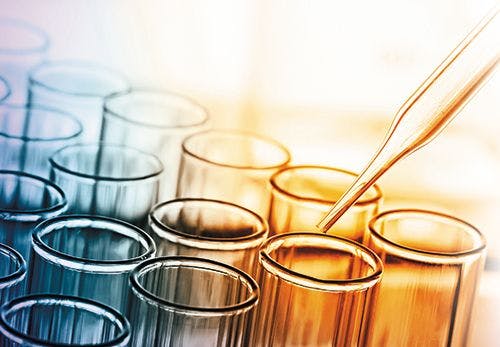A Universal Generic (U)HPLC Reversed-Phase Gradient Method for Quality Assessments of Multiple Small Molecule Drugs
This is the third in a series of articles exploring current topics in separation science that will be addressed at the HPLC 2019 conference in Milan, Italy, from 16–20 June.
turbomotion046/stock.adobe.com
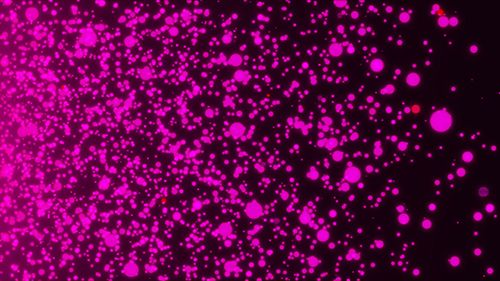
This is the third in a series of articles exploring current topics in separation science that will be addressed at the HPLC 2019 conference in Milan, Italy, from 16–20 June.
Wouldn’t it be nice if a single generic high performance liquid chromatography (HPLC) method could be used for all small molecule drugs-not only for potency assays but also for International Conference on Harmonization (ICH)-compliant stabilityâindicating assays?
The use of generic HPLC methods in pharmaceutical analysis is not new. For at least two decades, generic HPLC/UV/mass spectrometry (MS) methods using 1–2 min ballistic gradients have been used successfully for high-throughput screening of combinatorial libraries and new drug candidates (1). Similar generic methods are also used in in-process control (IPC) analysis to support organic synthesis or in quality control of raw materials (2).
The latest advances in ultrahigh-pressure liquid chromatography (UHPLC) systems and column technologies have enabled the development of a versatile, generic reversedâphase method(s) amenable to multiple small-molecule new chemical entities (NCEs) with an analysis time of 2 min for cleaning verification (3–4). The same universal methodology was found applicable for rapid characterization (3–6 min) of many drug substance samples with peak capacities over 200 and provides a useful starting point for the development of ICHâcompliant stabilityâindicating assays of most smallâmolecule NCEs.
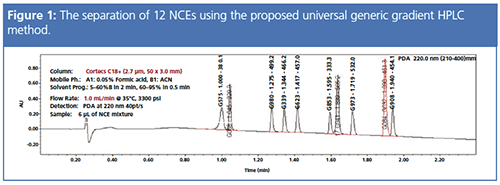
In this upcoming keynote presentation in HPLC 2019 in Milan, I will describe the development of this universal generic method(s) by selecting the best column technologies with optimized operating conditions for pharmaceutical analysis (superficially porous particles with bonding chemistries most compatible to highly basic compounds with simple mobile phases) (see Figure 1). The rationales used in the justification of the selection of various parameters will be disclosed.
Case studies to illustrate the versatility of this generic method approach by simple adjustments of gradient range and time in the development of stability-indicating assays will be presented. These examples will include quality assessments of many NCEs including complex drug molecules with multiple chiral centres as shown in Figure 2.
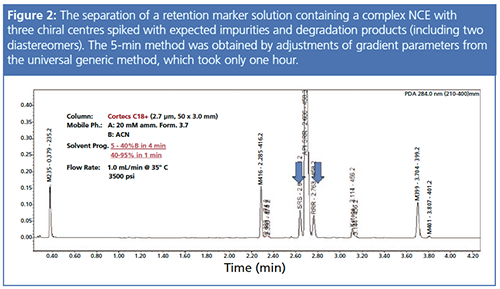
References
- M. Wong, B. Murphy, J.H. Pease, and M.W. Dong, LCGC North Am. 33(6), 402–413 (2015).
- M.W. Dong, LCGC North Am.31(8), 612–621 (2013).
- M.W. Dong, E.X. Zhao, D.T. Yazzie, C.C. Gu, and J.D. Pellett, Amer. Pharm. Rev. 15(6), 10–17 (2012).
- M.W. Dong, LCGC North Am.34(6), 408–419 (2016).
Michael W. Dong is a principal consultant in MWD Consulting focused on consulting and training services in HPLC and UHPLC, pharmaceutical analysis, and drug quality. He was formerly a Senior Scientist at Genentech, Research Fellow at Purdue Pharma, and Staff Scientist at Applied Biosystems / PerkinElmer. He holds a Ph.D. in analytical chemistry from the City University of New York, USA. He has 120+ publications including a bestselling book on chromatography (Modern HPLC for Practicing Scientists, Wiley). He is an editorial advisory board member of LCGC, American Pharmaceutical Review, and Chinese American Chromatography Association.
E-mail:michaelwdong2015@gmail.com
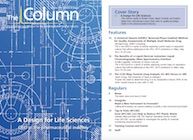
New Study Investigates Optimizing Extra-Column Band Broadening in Micro-flow Capillary LC
March 12th 2025Shimadzu Corporation and Vrije Universiteit Brussel researchers recently investigated how extra-column band broadening (ECBB) can be optimized in micro-flow capillary liquid chromatography.






